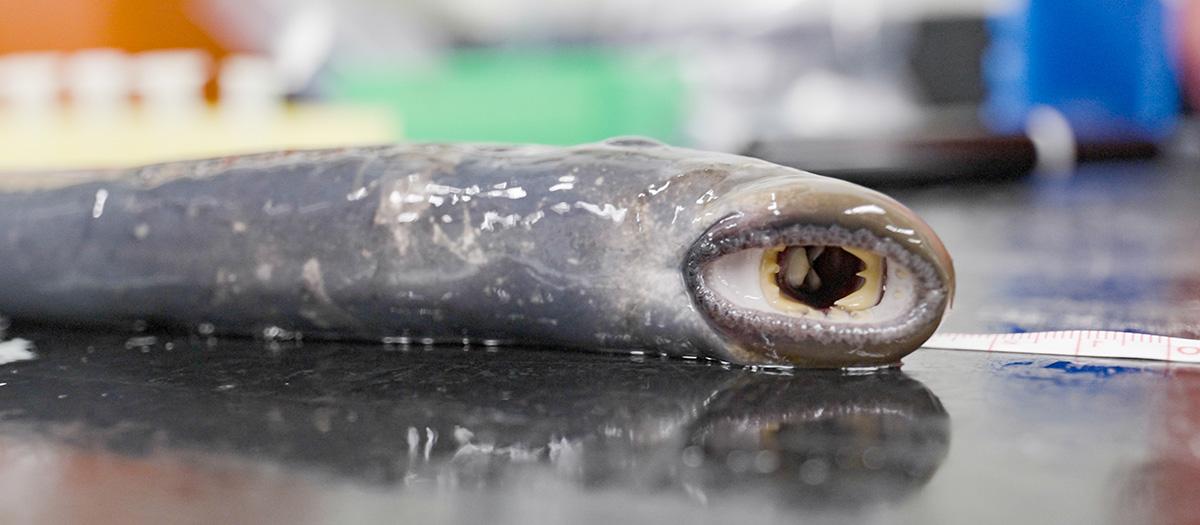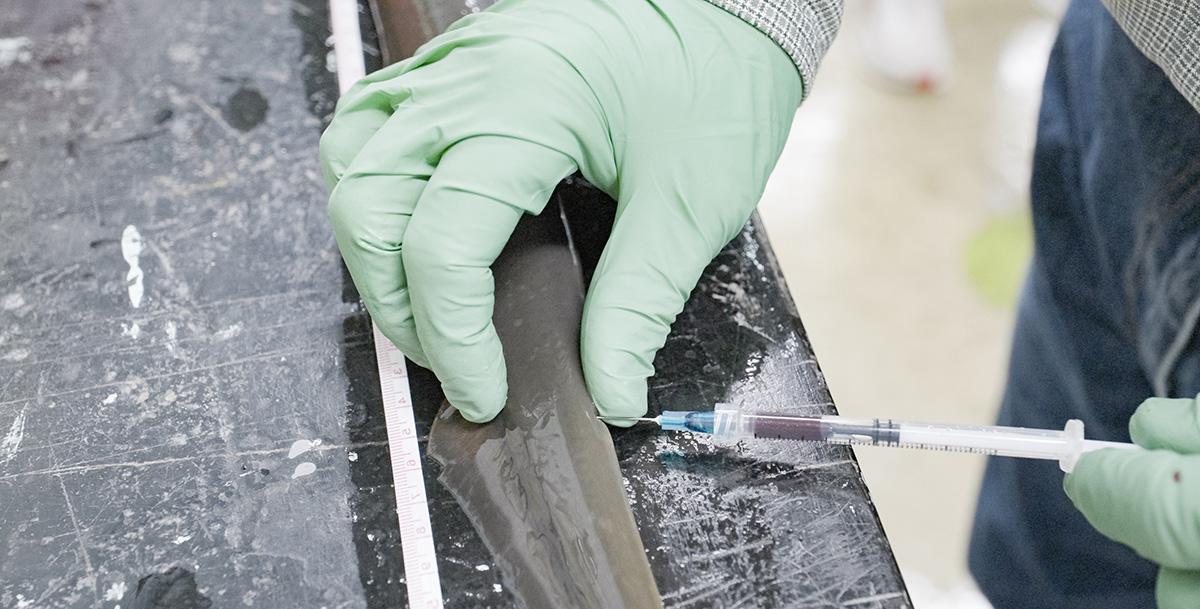Passing Safely to Spawning Sites
研究ers Ensure Mature Pacific Lampreys Reach Spawning Grounds
本文由 拉尔夫Bartholdt, University Communications.
Photos and video by 梅丽莎·哈特利, University Visual Productions.
Rock suckers and vampire fish are among the monikers given to Pacific lamprey for their parasitic lifestyle and ability to climb through a river rapid using the sucking disc of their mouth to scale rocks.
Known simply as heésu, 或鳗鱼, to the Nez Perce people, lampreys were an important source of food and medicine, and the town of Asotin, 华盛顿, took its name from a mispronunciation of Hesuutin, a Nez Perce word that means “place of the eels.”
Neighboring Asotin Creek was a favorite place for tribal members to harvest the slim, 没有鳞的, fish that spend much of their adult life in the ocean before traveling upstream from the Pacific to freshwater tributaries to spawn.

They are a really unusual and interesting fish. James 纳格尔, professor of zoology, College of Science
Although the voyage of lamprey heading to freshwater spawning streams has been impeded by Columbia River dams for almost a century, University of Idaho researchers are working closely with the Nez Perce and three other basin tribes that belong to the Columbia River Inter-Tribal Fish Commission to ensure lampreys are a stable inhabitant throughout their former, 淡水范围.
“They are a really unusual and interesting fish that once was common from the ocean to the headwaters of the Snake and Salmon rivers,” said James 纳格尔, a professor of zoology whose research encompasses a variety of sea-run fish including trout and salmon.
Using blood samples taken from netted lampreys and scanning the tubular fish with a compact ultrasound device, 纳格尔 and his team are developing a method of sexing fish and determining their maturity. This helps biologists know which fish to move upstream to spawning sites, and which ones may be kept in tanks until they are ready to be released into tributaries.

Fish that enter spawning streams before they are mature must spend as much as two years in the stream, making them vulnerable to predators.
“I think a lot of immature lamprey are lost like that,纳格勒说.
Conservation and restoration efforts by member tribes including the Umatilla, Yakama and Warm Springs include catching migrating lamprey at Columbia River dams as part of a translocation effort. Biologists and technicians transport lamprey around dams to allow access to upstream to spawning areas.
Lamprey are culturally important to the tribes and provide immeasurable benefits to the ecosystems. Laurie Porter, Columbia River Inter-Tribal Fish Commission lamprey project leader
“Lamprey are culturally important to the tribes and provide immeasurable benefits to the ecosystems in which they reside,” said Laurie Porter, the commission’s lamprey project leader. “The translocation programs were initiated to halt the population decline, prevent additional extirpation and to restore lamprey to sustainable harvestable levels throughout the historic range.”
Results from the monitoring programs confirm that translocation and artificial propagation benefit populations, with lamprey numbers increasing as a result of the efforts,波特说。.
Because male and female lampreys look the same, and early maturing fish are indistinguishable from late maturing fish, biologists are looking for ways to determine sex and age, so an appropriate number of mature males and females are released to spawn. 与此同时, immature fish would be held until they are ready to spawn, thus limiting predation and ensuring good spawning success.
Once a month in the basement of the College of Natural 资源 building on the U of I campus, 纳格尔, fellow researchers and assistants regularly remove lamprey, 一次一条鱼, from a holding tank.
“We get together here for a few hours monthly and collect data from the fish we have,纳格勒说.
Each fish is identified via its PIT (which stands for passive integrated transponder) tag. The fish are 重, 测量, a blood sample is collected and the fish are given an ultrasound exam to help identify sex and monitor the growth of sex organs before they are returned to the tank.
Lamprey that mature while in the possession of the biologists are released back into the river and tracked to the mouth of spawning streams that have PIT tag recognition devices. In an assembly-line fashion, data is collected from individual fish by a half dozen biologists clad in rubber boots to keep their feet dry as water from tanks is sloshed onto the concrete floor or dripped from the bodies of wriggling lampreys.
Graduate student Nick Hoffman is today’s acting fish wrangler. He dips a net into the tank, removes writhing lamprey from the cold water and transports them to a cooler — like the ones used on a camping trip — filled with sedative laced water. The fish are active and wriggling, making them difficult to handle unless they are sedated. From there, the lampreys, less active now, move through the assembly line.
“We started with a hundred but one escaped (likely back into the river) and we released some because they had matured,” said Lea Medeiros, a U of I research scientist who today is operating the compact ultrasound device.
Seventy-eight remain.
“They are super squirmy,” said Hoffman. “They can slip through a gap — they’re pretty sneaky.”

The fish can also climb fish ladders using their sucker mouth to pull themselves up, but once they enter fresh water, Pacific lampreys quit eating.
“They actually lose body weight and get smaller,梅代罗斯说.
一旦镇静, 重, 测量 and blood drawn to test hormone development, 纳格尔 measures the gap between the two fins on a lamprey’s back. Because the fins grow closer together as fish age, the measurement could help determine maturation in the future. The ultrasounds show development of sex organs.
“这是一只雄性, you can see this black part which is testes, and they will get bigger as the fish matures,梅代罗斯说.
She lays an anesthetized lamprey onto a tray and rubs an electronic monitor over its belly. In a female fish the ultrasound screen shows silvery white specks.
“That’s the ovary, and you can see the little white spots are forming eggs,” Medeiros said. Since translocation began in 2000, thousands of Pacific lamprey have been moved upriver, around dams and released in places like Asotin Creek, the south fork of the Salmon River, the south fork of the Clearwater River and tributaries to the Grand Ronde River.
“These fish were historically really important to Columbia River tribes, so this research could help bolster populations of these threatened indigenous fish,纳格勒说.
Published in March 2024.









